Most founders eventually have to pitch venture firms in hopes of raising capital. Tiffany Luck, a partner at NEA, took the stage at TechCrunch’s All Stage event in Boston to answer how to craft the perfect one.
“I like to think of a VC pitch as your initial way for assessing founder-investor fit,” she told the crowd before diving into her presentation. One of the most important slides to have in a pitch is “The What,” she said, meaning, “‘The What’ are you building.” That’s followed by “The Why” you are the right person for the job and why you have a unique solution. But there’s another Why, too: “‘Why’ is now the perfect time to do it.”
Then there is “The Who,” she continued, “Who have you recruited to do this crazy thing with?” And finally, “The How.”
“How are you going to get there? How are you getting there today? How will you get there over time?” she said.
Then, of course, “some sense of numbers,” she added, saying that part depends on what state a company is trying to fundraise for — pre-seed, seed, Series A, and so forth. “These are just meant to be the fundamental basics.”
Setting the stage
As Luck explained, “The What” sets the stage, telling the investor what the problem is, how it affects people, followed by what solutions exist today and where lies room for disruption.
Showcasing a product demo during “The What” is a good idea, she said, and that a lot of investors love product demos. “If you think a picture is worth 100 words, I think a demo is worth 1,000 hours,” she said. “When you see the product, you actually get it quickly.”
Techcrunch event
San Francisco
|
October 27-29, 2025
Luck said there are two different “Whys” every founder should address. First, there is the deeper Why, where a founder goes into their origin story and explains their unique perspective on a solution.
Obsession is key here, she said, adding that investors want to see and understand that a founder is completely consumed by a problem and solution. This this passion is what will keep everyone motivated to keep building, she said.
Following this is the “Why now,” which means going into the market dynamics and readiness.
“It’s telling the story of why the market is ready for what you have or what you’re building,” she said.
The Why now leads into “The Who,” where the founder is expected to talk about the team they’ve assembled, how everyone’s skills complement each other, and why everyone is obsessed with the mission of the product.
“The shared conviction piece is really important,” Luck said. “It’s ‘how are you all envisioning the future together?’”
“The How,” is where a founder is supposed to talk about “milestones.”
Here, she said, investors want to know what the minimum viable product (MVP) is? Who are the early users ? And what feedback the product is getting from them so far?
“And again, explain where you are today. Where are you going? What have you learned?” she asked, listing off the questions.
Talking about pivoting, if necessary, is also good here.
Luck noted that she often talks to founders who pivoted early or at some point in their journey. It helps investors learn more about the early phases of a company, of “where not to go, what not to do, and it will help with the rest of the journey,” she said.
For the love of numbers
Finally, she weighed in on the importance of numbers.
“Investors do love numbers,” she said. “I think a lot of the important numbers also involve storytelling.” Here, investors want to know about the market size and any traction a product might have. “Why do customers love this product? Why do you imagine that it’s not only going to grow, but grow sustainably in a way that has great retention?”
She likes to see a company talk about how much cash it’s burning through, and what the runway looks like. The most important thing, though, is the ask: how much a founder is looking to raise this round and what they will do with the money.
All together, the Who, What, How, and (two) Whys serve as a starting point, helping founders as they go forth on the entrepreneurship journey.
“Founding a company is like extreme sports,” she said, likening it to climbing Everest in particular. “You’re going up on milestones, different camps. You’re encountering challenges, you’re weathering storms, and you know, eventually you’re trying to make it to the top, to the summit.”






